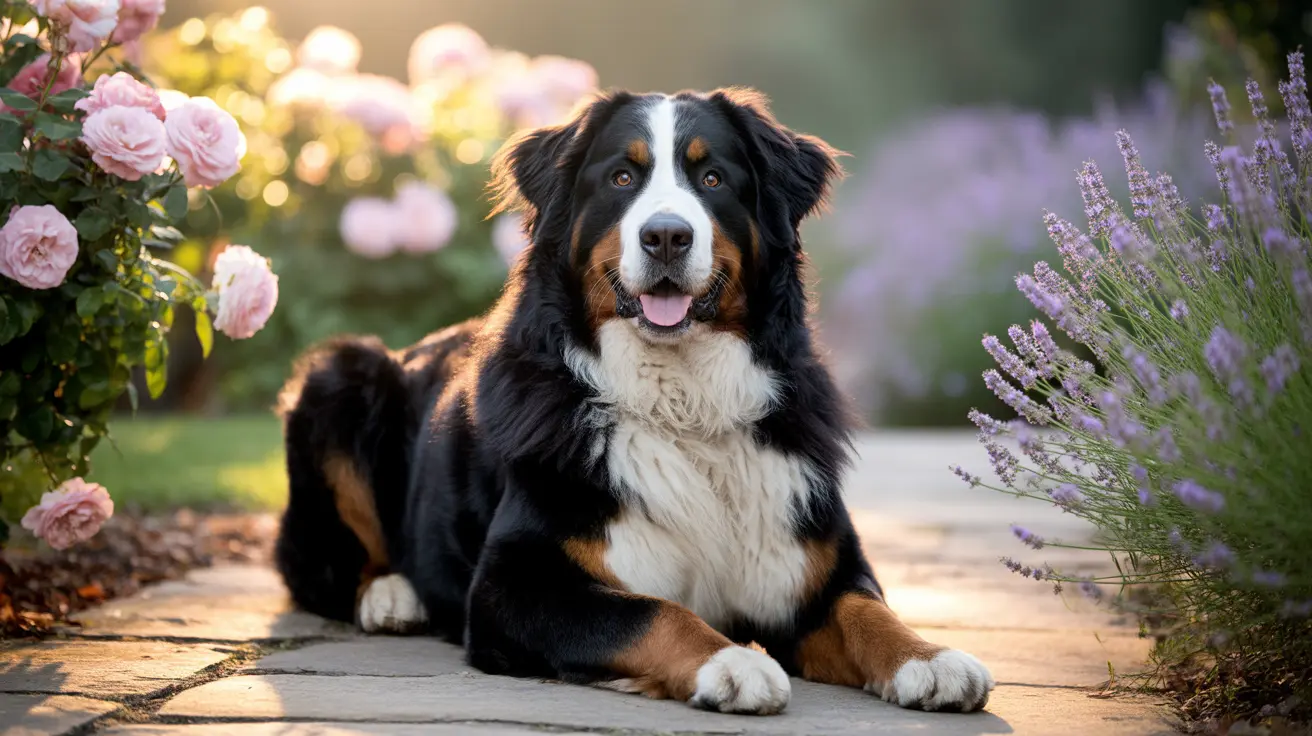What Makes a Perro de 3 Colores Special?
A perro de 3 colores is characterized by its distinctive three-color coat pattern, which results from specific genetic combinations. These colors typically appear in predetermined patterns across the dog's body, with each breed displaying its unique distribution of colors. The most common combination includes:
- Black as the primary color
- White markings on the chest, paws, and face
- Tan or rust accents in specific areas
This color pattern isn't just beautiful—it's also deeply rooted in many breeds' histories and serves various practical purposes, from camouflage to visibility during hunting.
Popular Tricolor Dog Breeds
Traditional Purebred Varieties
Several well-known breeds consistently display the tricolor pattern:
- Beagle
- Bernese Mountain Dog
- Australian Shepherd
- Cavalier King Charles Spaniel
- Greater Swiss Mountain Dog
Modern Mixed Breeds
The tricolor pattern also appears in popular designer breeds:
- Bernedoodle
- Aussiedoodle
- Various other mixed-breed combinations
Caring for Your Tricolor Dog
While the care requirements for perro de 3 colores vary by breed, there are some common considerations:
Grooming Needs
Depending on the breed, grooming requirements can range from minimal to extensive:
- Short-coated breeds need weekly brushing
- Long-coated varieties require daily grooming
- Special attention to white areas that show dirt more easily
Health Considerations
Tricolor dogs may have specific health needs based on their breed:
- Regular skin checks, especially in white-colored areas
- Protection from sun exposure on lighter patches
- Breed-specific health screenings
Understanding Tricolor Genetics
The striking appearance of a perro de 3 colores is the result of complex genetic interactions:
- Multiple genes control color distribution
- Specific combinations create the tricolor pattern
- Inheritance patterns vary by breed
Training and Temperament
While coat color doesn't determine personality, many tricolor breeds share certain characteristics:
- High intelligence
- Strong working drive
- Excellent family companion potential
- Need for proper socialization and training
Frequently Asked Questions
What breeds are most commonly recognized as perro de 3 colores (tricolor dogs)?
The most commonly recognized tricolor breeds include Beagles, Bernese Mountain Dogs, Australian Shepherds, and Cavalier King Charles Spaniels. These breeds consistently display the classic three-color pattern in their coats.
How do I care for the coat of a tricolor dog with different grooming needs?
Care requirements vary by breed. Short-coated tricolor dogs need weekly brushing, while long-coated breeds require daily grooming. Pay special attention to white areas that show dirt more easily, and maintain regular bathing schedules based on your dog's specific coat type.
What genetic factors determine the tricolor coat pattern in dogs?
Tricolor patterns result from specific interactions between multiple genes, particularly those controlling pigment distribution. The main genes involved are the agouti, tan point, and piebald loci, which work together to create the distinctive three-color pattern.
Are tricolor dogs generally good family pets in terms of temperament and energy?
Most tricolor breeds make excellent family pets, known for their friendly and affectionate nature. However, energy levels vary significantly by breed, from calm Bernese Mountain Dogs to highly active Australian Shepherds.
How can I identify if a mixed breed dog is a tricolor and what are common examples?
A tricolor mixed breed dog will display three distinct colors in its coat, typically black, white, and tan/rust. Common examples include Bernedoodles, Aussiedoodles, and various shepherd mixes. DNA testing can help confirm breed heritage.
Whether you're considering adding a perro de 3 colores to your family or simply admiring these beautiful dogs, understanding their unique characteristics and care requirements will help ensure a happy, healthy life for these striking canine companions.






